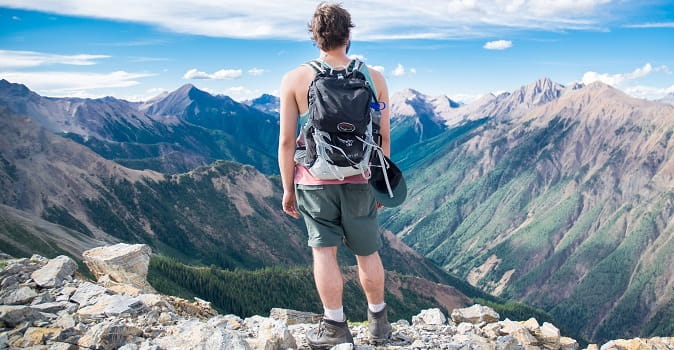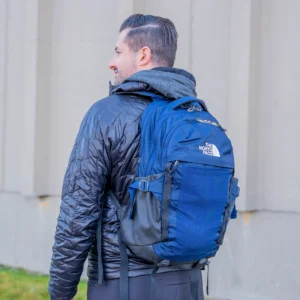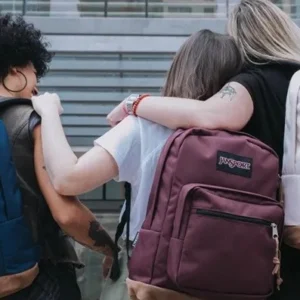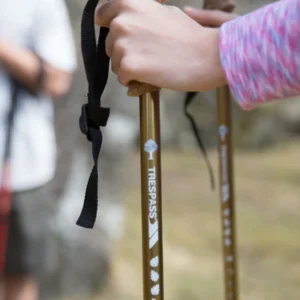We’ve created this purchasing guide for you if your understanding of hiking backpacks is limited to the Jansport and L.L. Bean backpacks your children wear to school.
Hiking backpacks are very different from school backpacks in terms of style. Try taking a real trip while carrying your child’s backpack, and other hikers — as well as forest creatures – will most likely laugh you out of the region. A hiking backpack is made of durable materials and has a lot of pockets to carry tiny and large objects. It’s meant to be highly adjustable, so it can properly fit your body for a comfortable hike.
While researching hiking backpacks, we spoke with Amy Horton, a TSX Challenge backpacking guide.
You can trust our recommendations because we never accept free samples from manufacturers. Please keep reading this buying guide to discover more about hiking backpacks and how to choose the right one for you
ENJOYING YOUR HIKING BACKPACK
According to Horton, three features of your backpack are crucial to a good hike. You’ll have the finest experience if you choose a model that meets your needs in these three areas.

Hiking Backpacks Capacity:
Make sure the backpack you choose can accommodate all of the items you’ll need. This requirement may change from trip to trip, so choose a pack that can hold the most items you’ll need. “Capacity varies greatly between packs,” Horton explains, “so you should do some study on what you need.”
Comfort:
No one enjoys a hike when their muscles and skin are scraped by the backpack straps. “Comfort is crucial,” Horton adds. “You’ll be carrying it for a long time on your back, with anywhere from a tiny to a significant amount of weight.”
Hiking Backpacks Features:
Consider your hiking or camping preferences, such as whether you want to be near water or if you want to be outside in the cold. Choose a hiking backpack that includes elements that will assist you in dealing with these scenarios. “Do your study on what you believe you need and/or prefer to have,” Horton recommends, “since features change from pack to pack.”
Top 5 Hiking Backpacks
| IMAGE | Product Name | Details | Store | |
|---|---|---|---|---|
| TETON Sports |
TETON Sports

|
Oasis 18L Hydration Pack with Free 2-Liter water bladder |
|
Check On Amazon |
| Zomake |
Zomake

|
Packable Hiking Backpack Water Resistant,35L Lightweight Daypack |
|
Check On Amazon |
| TETON Sports |
TETON Sports

|
Scout 3400 Internal Frame Backpack; High-Performance Backpack |
|
Check On Amazon |
| WILDMAX |
WILDMAX

|
Hydration Backpack with 2L Water Bladder, Insulated Hydration Pack Water Backpack |
|
Check On Amazon |
| NUFR |
NUFR

|
Sling Bag Sling Backpack Crossbody Backpack for Women Men Waterproof Chest Shoulder Bag |
|
Check On Amazon |
CAPACITY OF HIKING BACKPACKS
Another issue for hikers is determining the capacity of the hiking backpack they require. There are many various capacity packs on the market; you’ll need to spend some time considering how you intend to use the backpack.
Consider the type of gear you’ll be carrying and if you’ll be trekking overnight or for numerous nights when choosing the correct pack capacity.
It’s important to note that different backpack manufacturers list the bag’s capacity in different dimensions. Some people use liters, while others use cubic inches or cubic feet. 1 cubic foot is approximately 28.3 liters. 1 liter is approximately 61 cubic inches.
Multiple-day packs:
For multi-day camping outings, the largest packs, with a capacity of 65 liters or more, are recommended.
These packs are ideal for carrying winter clothing, as well as tents, food, and cooking supplies for a long camping trip.
Specialty gear, such as mountaineering tools, can also be carried in this highest capacity bag.
Two-day packs:
A pack with a capacity of 40 to 65 liters is typical for a weekend camping trip. These mid-size bags are ideal for transporting a small tent and other essentials for a few nights. You can fit some cool-weather stuff in this bag, but if you have a lot of winter gear, you’ll need a bigger bag.
Overnight packs:
The tall and slender shape distinguishes an overnight pack. The majority of these tiny hiking backpacks have a capacity of 20 to 40 liters. This bag can also be used as a hiking pack for a day trip. Expect to be unable to pack a tent or substantial winter gear inside this bag.
FINDING THE RIGHT FIT
Fit plays an important impact in how much you like your hiking backpack. According to Amy Horton, our outdoor expert, if the pack doesn’t fit properly, it can cause pain while you’re wearing it.
“Buying the correct size pack is critical, especially if you’re carrying any amount of weight,” Horton explains. “To truly appraise it, you need to try it out with as much weight as you’ll be hauling on the journey.”
To choose the best-fitting hiking backpack, measure your torso. Use a measuring tape and enlist the help of a friend. From the base of your neck to the tops of your hips, measure the length. Use this measurement in inches to select the best backpack for you. height
EXTRA FEATURES ON THE HIKING BACKPACKS

Even if you performed a lot of research before purchasing a hiking backpack, you may discover a few extras you weren’t aware of when you receive it. Some backpack manufacturers incorporate a few unique characteristics that aren’t well-publicized in the product description.
Amy Horton, one of our experts, advises that you inspect your bag thoroughly after receiving it. Make sure you’re familiar with any additional features so you can use them on your hikes. The following are some frequent characteristics to look for:
Bungee cords are used to connect people.
- Whistles of dissatisfaction
- On the outside, pockets
- On the outside, there are straps.
- Additional padding
- Mesh-covered pouches
- Pockets that are concealed
- parts made of waterproof materials
OTHER USES FOR HIKING BACKPACKS
Sure, transporting your goods is the major role of your hiking backpack. However, as Horton points out, hiking backpacks may be used for a variety of purposes, making them adaptable and useful pieces of gear.
Backrest For Hiking Backpacks
The pack doubles as a comfortable backrest when completely laden, which can be used in camp or while resting on the path. “Sit on a rock, stay strapped in, and lean while having a break and don’t want to take it off,” Horton recommends.
Hanging food
If you don’t have a bear container or food bags, keep your food in your pack and hang it from a tree or pole while camping.
Pillow
Soft-sided hiking backpacks can be used as a pillow for a quick nap or as a soft surface to sit on instead of the hard ground. “Just don’t sit on your water bladder and it will pop,” Horton advises.
Storage at home
Use the pack’s capacity to organize your junk around the house. It can be used to keep part of your camping stuff organized and ready to go, for example.
Sun shade
To give some sunshade when hiking, include some higher things in your backpack. “It’ll offer you some shade on the back of your torso, neck, and head while you’re wearing it if it’s tall and packed enough,” Horton adds.
Pack goods you’ll need frequently in the outside pockets of your bag. Organize your belongings so that you don’t have to unpack the full bag every time.
Conclusion
The external frame backpack is an excellent choice for those who want to put a lot of gear or supplies in their backpack. These backpacks are ideal if you will be carrying multiple tools and supplies with you on your hike. While they are heavier than internal frame backpacks, the added support and comfort make them a great option for carrying heavier loads.




